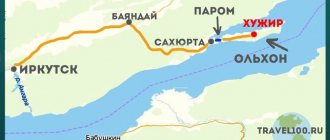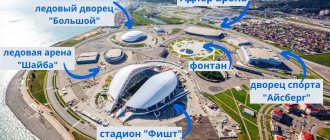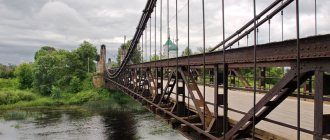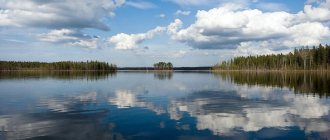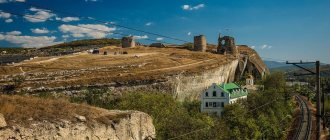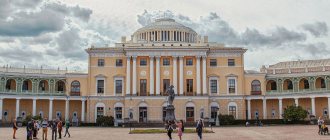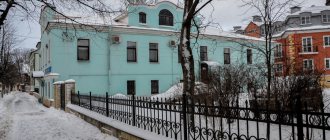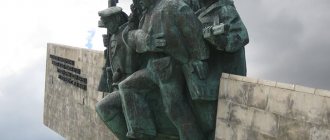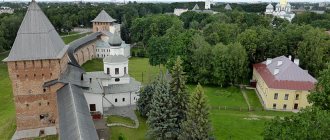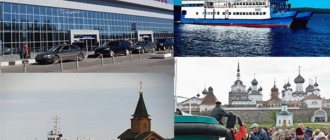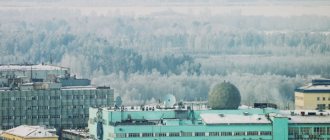Solovetsky Archipelago - a group of small islands in the gulf of the White Sea. This is the only inland sea of the Arctic Ocean. For half a year it is covered with drifting ice floes, and after they melt in the summer, the sea ebbs and flows, and seals and beluga whales, not afraid of people, come ashore.
Northern summer delights with white nights and a huge disk of the sun setting directly into the sea. Lakes, green forests with tall, even trees are filled with purity and natural freshness. The average annual temperature of the archipelago is +1C, the highest in peak summer is +12.9C.
Winter covers islands, forests and mountains with a white carpet of snow, not seen in cities for a long time, and illuminates them with the northern lights. Professional photographers tend to come here in winter.
Large islands of the archipelago:
- Bolshoi Solovetsky – 225 km2;
- Anzer – 48.5 km2;
- Muksalma Bolshaya – 19.9 km2 and Small – 0.6 km2;
- Zayatsky islands Bolshoy and Maly are approximately 1 km2 each.
The settlement of the islands occurred in the 2-1 thousand BC. – the pagan tribes of the proto-Sami came here, they left a large number of burials, burial mounds, labyrinths, through which their life and beliefs are studied.
In the 15th century, the first monks began to settle on the islands, turning the pagan center into a stronghold of Orthodoxy in the Russian north. The history of Solovki from the Middle Ages to the present day is closely connected with Orthodoxy.
What else, besides Solovki, is worthy of attention in the Arkhangelsk region?
How to get to the Solovetsky Islands on your own
By plane
From Arkhangelsk:
Regular flights on the L-410 plane from Vaskovo airport (flight time - 50 minutes).
| Period of the year | Days of the week | Departure time from Arkhangelsk | Departure time from the Solovetsky Islands |
| 09.06.15. — 31.08.15. | Monday Wednesday Friday | 13.20 | 14.40 |
| 03.09.15.-30.09.15. | Wednesday Friday | 13.20 | 14.40 |
Airport telephone in Arkhangelsk: 8(182) 46-21-00 Airport telephone on the islands 8(8183590) 3-11 Website: https://www.2aoao.ru/ Information and reference service throughout Russia 8 800 200 00 55; on the Solovetsky Islands 8 (818-3590) 236.
From Moscow:
Air travel is carried out from Sheremetyevo-1 airport.
The flight schedule should be checked on the website: www.nordavia.ru
From Saint-Petersburg:
On a private plane taxi "Dexter" (8 seats) route "St. Petersburg - Solovki - St. Petersburg". If there is a free plane in St. Petersburg.
The cost is 249,360 rubles for the entire aircraft. The possibility of departure must be agreed upon! Phone: , Maxim Korovin Website: www.dexter.aero Address: Moscow, Sibirsky proezd, building 2, building 8
By sea (by motor ship)
From the city of Kem (Karelia)
Daily boat trips from the pier in the village of Rabocheostrovsk from June 1 to September 20. The village of Rabocheostrovsk can be reached from the city railway station:
- By bus from the Prichal Hotel (passenger fare without luggage is 50 rubles, travel time is 30 minutes);
- City bus No. 1 (passenger fare without luggage is 20 rubles, travel time is 30 minutes);
- City minibuses and private taxis (fare: 300 rubles, travel time: 15 minutes).
| Motor ship | Departure from Kemi | Travel time | Departure from Solovki | One way ticket price |
| "Blizzard" | 12.30 | 2 hours | 16.00 | Adult - 1000 rubles, children from 3 to 10 years old - 500 rubles. |
| "Vasily Kosyakov" | 8.00 | 2 hours | 19.00 | Adult - 1000 rubles, children from 3 to 10 years old - 500 rubles. |
Telephone: 8(81458) 56-060
From Belomorsk (Karelia):
Daily boat trips from the Fishing Port from June 1 to September 20. It takes 15 minutes by car to the Fishing Port from the station.
| Motor ship | Departure from Belomorsk | Travel time | Departure from Solovki | One way ticket price |
| "Sapphire" | 8.00 | 4 hours | 19.00 | Adult – 1100 rubles, children under 5 years old free, from 5 to 12 years old – 600 rubles. |
Telephone: +7 921-800-45-40.
Mentors
In addition to the revered venerable founders of the monastery and ascetic life, the Russian Church glorifies many worthy monks and ascetics who followed their example, spiritual students of the monastery of the far north:
- Founder of the Anzersk monastery, Venerable Eleazar;
- Reverend Elisha of Sumy;
- Founder of the Golgotha-Crucifixion Skete, Hieroschemamonk Job;
- Blessed Theodoret, enlightener of the Lapps;
- Hermits Andrei, Savva, Andrian, Nestor and Nicephorus.
The spiritual heritage and influence of the monastery was not limited only to the walls of the monastery, but spread far beyond its borders throughout the country.
Solovetsky Kremlin
The majestic and substantial Kremlin was built at the beginning of the 17th century. As befits a defensive structure, the Kremlin has powerful walls made of granite boulders, almost 1200 meters long, 7 to 10 meters thick, and battle towers of varying heights from 10 to 17 meters.
The material of the walls is granite boulders, polished by glaciers and sea water. The walls and towers of the Kremlin are so skillfully inscribed by the architects into the natural landscape that they not only do not disturb, but complement and decorate it.
Interior decoration
Nothing from the interior decoration of the ancient monastery buildings has survived to this day. What survived the fires was completely destroyed during the years of the atheism. Most works of ancient art are irretrievably lost, and many architectural monuments have been destroyed or destroyed.
It was possible to remove and preserve a small part of the icons and unique handwritten books. This Solovetsky heritage is now distributed among various museums across the country.
Among the design features, one can note thick walls supported by powerful central pillars, and interior niches and chambers for storing utensils. Rounded corners of deep window niches with glazed openings. Rounded vaults in a calm consecration soften the internal boundaries of the premises and create plasticity of the entire structure.
The vaults and walls were painted with oil paints with edifying scenes from Scripture; their fragments were carefully removed by restorers and placed in the museum’s collections.
Spaso-Preobrazhensky Solovetsky Monastery
Address: Solovetsky village Phone: 8 (183590) 298 Website: https://solovki-monastyr.ru
The history of the settlement of the monastery began in 1429 by the monks Herman and Savvaty. In 1436 the opening of the monastery was officially announced. In the 16th century, through the efforts of Abbot Philip, the stone cathedrals of the Assumption of the Blessed Virgin Mary and the Transfiguration of the Savior were erected, into which the relics of the monks who founded the monastery were transferred from St. Petersburg.
The construction of mills and saltworks at the monastery enriched its treasury, especially after receiving from the tsar the right to duty-free trade in salt. With the proceeds, the enterprising abbot opened a weapons factory. With weapons produced at this factory, the monastic brethren withstood three sieges by Swedish troops at the end of the 16th and beginning of the 17th century.
Such successes of the abbot did not go unnoticed by Ivan the Terrible; he invited Abbot Philip to take the position of metropolitan, and in 1639 he accepted the miter with the name Nikon. The implementation of Nikon's transformative church reform, inspired by the tsar, was met with hostility by the clergy everywhere and especially on the territory of the monastery. The reforms were never completed; in Orthodoxy they caused a split into Old Believer movements, and in the monastery there was an armed riot “Solovetsky Sitting”, which ended with the armed capture of the monastery fortress and the death of the monks.
In the 18th century, the monastery came under direct subordination to the Synod (the highest body of church authority). They continue to mine salt there, build forges, and raise fish in the lakes. Significant monetary values and precious church utensils accumulate in the monastery churches.
At the same time, it was a border fortress with its own garrison and artillery pieces.
The monastery owned an extensive library of handwritten books; the first bookplate in Russia came from its walls.
Prisoners began to be sent to Solovki not under the Soviet regime - they rather continued this tradition - but under Ivan the Terrible and until 1883.
In 1920, the monastery was closed by the communists, under the guise of requisitioning property for the benefit of the hungry, the new government plundered the monastery property, exported food, gold and silver from icon frames, and precious stones from the vestments of the clergy.
In the 20s and 30s, a special purpose camp and prison, SLON and STON, were opened on the island, which became part of the Stalinist Gulag.
The resumption of monastic life took place in the fall of 1990.
On the territory of the monastery the following have been preserved and are available for inspection:
- Assumption Cathedral, three-domed with a large refectory (almost 500 m2)
- The Transfiguration Cathedral is more than 40 meters high with sloping pyramid-shaped walls, from which enemy cannonballs ricocheted off
- Church of the Annunciation (16th century)
- Watermill (early 17th century)
- Bell tower (late 18th century)
- Nicholas and Trinity churches (19th century)
The buildings and fortifications of the monastery are located on all four islands of the archipelago, but the main ensemble is concentrated along the coastline of Blagopoluchiya Bay, cutting into Bolshoi Solovetsky Island.
Temples, towers, utility rooms and warehouses are connected to each other by underground passages, which more than once saved the monastery from conquest during sieges.
Over the course of such a long history, some buildings of the monastery were destroyed and lost forever; worship crosses were installed in their place. Now there are more than 20 of them on the archipelago.
When is the best time to go on this trip?
The proximity of the Arctic Circle largely determines the climate of the area in which the Solovetsky Islands are located. Frequent winds, high humidity, sudden temperature changes - this is what you can encounter when visiting Solovki.
However, the islands have their own characteristics. Winters are mild, autumns are warmer than springs, and summers are quite cold. July is the warmest month of the year on the islands, the average temperature is about +10 °C, it is best to visit the archipelago at this time. In February, it is better not to come to Solovki; you can experience the lowest temperatures – about -11 °C.
Solovetsky State Historical, Architectural and Natural Museum-Reserve
Address: Solovetsky village Telephone: 8 (1835) 9-02-41, 9-02-81 Website: https://www.museum.ru/M942 Opening hours: excursions of the museum-reserve in the summer (June 1-October 1) from 9.00 – 18.00 daily. Excursions on Bolshoi Solovetsky Island are held all year round. The cost of excursions varies, it depends on the duration and means of transportation (on foot, by boat, on a boat) and ranges from 300 to 450 rubles per adult citizen of the Russian Federation.
It was created after the closure of the special purpose camps and the end of the Gulag in 1967 as a museum of the history of camps and prisons on Solovki, and since 1974 it has included religious buildings and natural monuments. The museum continues to operate even after the monks moved into the monasteries.
The museum-reserve preserves more than 1000 monuments of history, ancient culture and nature that arose from the 5th millennium BC to the 21st century.
A huge pagan temple - the largest in the north of the European part of Russia - with a complex of funerary and cult objects is located here. Under the protection of the museum is a unique artificial system of canals that connected the lakes of the Solovetsky Islands according to the design of Abbot Philip.
The museum's exhibitions include:
- monastic buildings, temples, chapels, bell towers, cathedrals;
- monastery buildings for housing, defensive, and economic needs: an icon-painting chamber, a hotel for pilgrims, a refectory, buildings for making shoes, sewing clothes, brewing kvass and salt, dating back to the 16th - 20th centuries.
In addition to objects telling about the centuries-old life of monks on the island, the museum’s collections include:
- Documents, photographs and objects related to the history of exile camps on Solovki;
- Military household items, weapons, navigation instruments from the Solovetsky school of cabin boys, located on the island during the Patriotic War;
- Archaeological artifacts illustrating the life of the people who were the first to explore the Solovetsky Islands;
- Items covering the modern history of the islands - maps, booklets, stamps, postcards.
Since 1992, all objects of the museum-reserve have been included in the UNESCO World Heritage List.
Useful tips
It’s cold in the White Sea even in the middle of summer, so warm clothes are a good idea! Sometimes there is a storm at sea, fog and strong winds are possible. Ships do not sail on such days. In this regard, when planning a trip to Solovki, it is worth making a reserve of 1-2 days. In case of rain, it is worth taking with you waterproof shoes and a cape - when a strong wind blows, an umbrella is powerless. Since you will be walking a lot, your shoes should be as comfortable as possible.
The White Sea is harsh even in summer
According to generally accepted rules, women should wear long skirts and scarves when visiting temples and monasteries. In summer there are a lot of mosquitoes on Solovki, so it’s worth stocking up on repellent for blood-sucking insects. It is not necessary to bring food with you, since there is a store on Solovki. There are no poisonous snakes or predatory animals on the Solovetsky Islands.
Bolshoi Zayatsky Island
Visited with excursions of the museum-reserve
The main monument of the island is St. Andrew's Church, which was the property of St. Andrew's Hermitage, which belonged to the monastery. Construction of the stone church and other church buildings began after Peter I's visit to the island in 1702.
There is a legend that, having given the order for the construction of a temple in the name of St. Andrew the First-Called, the Tsar came up with the appearance of the St. Andrew's flag, which in the future would become the symbol of the Russian Navy.
The ancient stone labyrinths on the island date back to the 1st-2nd centuries BC. Outwardly, they resemble the catacombs and labyrinths in Rome and Athens. Almost 500 similar labyrinths have been discovered on the shores of the northern seas (Barents, Baltic, White). Historians agree that they were intended for pagan rituals, the essence of which remains unknown to us.
Walking through the labyrinth is mandatory with a guide.
Northern monastery
The Solovetsky Monastery, the main attraction of the archipelago, is located on the western shore of the Big Solovetsky Island. It is located on a narrow strip between the eastern shore of Blagopoluchiya harbor and the Holy Lake. For a long time, the ancient monastery was an outpost on the northern borders of the Moscow state. Its first stone buildings were the Assumption Cathedral and the refectory. They appeared in 1557. The high fortress wall was built for quite a long time - in the period from 1584 to 1594.
Solovetsky Monastery
Huge granite boulders were used to build the walls of the citadel. Only those that did not need to be processed were used. The total length of the walls exceeds one kilometer. In plan, the fortress is a pentagon with an irregular shape. In 1617, the walls were protected on both sides by ditches, which were filled with water. Later, the northern ditch was drained and surrounded by a wooden palisade.
Harbor of Prosperity
When the ship approaches the island, the monastery gradually appears on the horizon like a magical castle. Tourists and pilgrims usually head straight to the fortress. Here you can purchase a detailed map of the island and a plan of the monastery buildings. Wandering through the labyrinths of the monastery is a fascinating activity. You can even get lost in the endless passages and halls. It is worth climbing the fortress walls to admire the magnificent panorama of the harbor and Lake Svyatoe.
Wandering through the labyrinths of the monastery is a fascinating activity
Hermitages are scattered throughout the island. The paths leading to them are laid through picturesque places and pass by numerous small lakes. The most beautiful path lies to Sekirnaya Mountain. At its top stands the Holy Ascension Monastery, founded in the 19th century. From the village to the monastery no more than 12 km. The temple is unique in that there is a lighthouse on its dome. The monks lit a fire every night from August 15 to November 15, showing the way to the fishermen. The lighthouse is still in operation today. Its height is 123 meters. There are 135 steps leading to the upper platform.
Residential buildings on the island
You should definitely visit Bolshoy Zayatsky Island, where St. Andrew’s Monastery is located. In 1691, a wooden chapel was moved here from the Big Solovetsky Island, which was built by the archers near the monastery during the so-called “Solovetsky Sitting”. This happened in the second half of the 17th century. In 1702, during the visit of Peter I, it was rebuilt into a church and consecrated in honor of the Apostle Andrew the First-Called. The temple is considered the oldest monument of northern wooden architecture.
Mount Sekirnaya
Visited with excursions of the museum-reserve
It is located 11 kilometers from the monastery and is the highest point of the archipelago - 73.5 meters. It is rather a large hill covered with coniferous forest, high, smooth and beautiful.
The top of Sekirnaya Mountain is crowned by the Ascension Monastery, built according to the design of the architect Shakhlarev in 1860. A bell tower rises above the temple, under the upper head of which there is a working lighthouse.
From the top of the mountain you can see Savvatievo - a picturesque place of settlement of the first monks who founded the monastery.
During the years of the Solovetsky camps, there was a punishment cell for prisoners on Sekirnaya Gora.
At the base of Sekirnaya Mountain there are several worship crosses in memory of prisoners of Stalin’s camps.
Hotels and inns
The only village on the archipelago, Solovetsky, lives largely on tourism. Therefore, there are no problems with housing here! There are several hotels on the territory of the Big Solovetsky Island. They are all located in the vicinity of the Solovetsky Monastery and, as a rule, serve tourist groups.
Individual travelers can freely rent a room or apartment from local residents in the village. There is also a pharmacy and grocery stores located here. But there are no ATMs on the archipelago. Therefore, you need to come here with a reserve of cash. The only Sberbank branch on the island is open only a few hours a day from Tuesday to Saturday. Also be careful! Living in some private houses provides only partial amenities.
If you prefer to spend the night in a tent in the open air, then you will have to obtain permission from the local administration. Since the territory of the Big Solovetsky Island belongs to a strictly protected area, tents are allowed to be pitched here only in one specially designated place, a 10-minute walk from the monastery. For the convenience of those living in the tent camp, a field kitchen and a bathhouse are equipped. The latter is available for a fee.
Solovetsky Maritime Museum
Address: Bolshoi Solovetsky Island, Cape Seldyanoy, Rowing Barn. Website: www.museum.solovki.info Opening hours: June – September from 10.00 to 21.00 Cost: free
Opened in honor of the 500th anniversary of St. Philip, it tells in a fascinating way about the traditions of Russian maritime culture and the pre-Petrine roots of the development of navigation, which is quite unexpected.
Separate exhibitions and stories from guides are dedicated to:
- The role of Russian sea travelers in laying sea routes to the shores of the Arctic and its further development;
- The participation of the monks of the monastery in the development of navigation in the northern seas.
The main exhibition tells about shipbuilding technologies for navigation in the northern seas, thanks to which the Arctic lands were developed in the 15th-17th centuries.
Museum exhibits were collected by expeditions of the Northern Navigation Partnership, which founded the museum, by private collectors and local historians of the Arkhangelsk region.
Cafes and restaurants
As for catering, cafes and restaurants can only be found in the village of Solovetsky . As a rule, they are located at hotels and inns. Often restaurants only serve tourist groups upon reservation. Pomeranian cuisine and Solovetsky delicacies, which mainly consist of fish, berries and mushrooms, can be tasted in the Stary Karbas cafe, located opposite the Solo-Nord hotel. There are restaurants at the Solovki Hotel, Solovetskaya Sloboda hotels and at the Solovki Company tourist complex.
Where are Solovki located?
The Solovetsky Islands are located in the southwestern part of the White Sea.
The islands block the entrance to Onega Bay. However, they are located 200 kilometers west of Arkhangelsk and in general did not represent any strategic interest either for the defense of the northern trade route or for the defense of the port of Arkhangelsk.
It is all the more surprising that the Solovetsky Monastery appeared on the islands, built as a full-fledged military fortress.
The place was not suitable for protection from the Swedes and the British.
Even as a center of Moscow’s influence on the local weakly subordinate Karelian tribes - too.
Kem or modern Rabocheostrovsk would be better suited for this. After all, mainland Karelia.
Why and why the treasury allocated money for the grandiose construction is unknown.
Patronal holidays
The monastery especially celebrates patronal feasts; the dates are given according to the new style:
| date | Celebration |
| January 22 | Saint Philip, Metropolitan of Moscow |
| April 30 | Rev. Zosima |
| August 19 | Transfiguration |
| August 21 | Zosima, Savvaty and German Solovetsky |
| August 22 | Cathedral of Solovetsky Saints |
| August 23 | Council of New Martyrs and Confessors of Solovetsky |
| October 10 | Saint Savvaty the Reverend |
